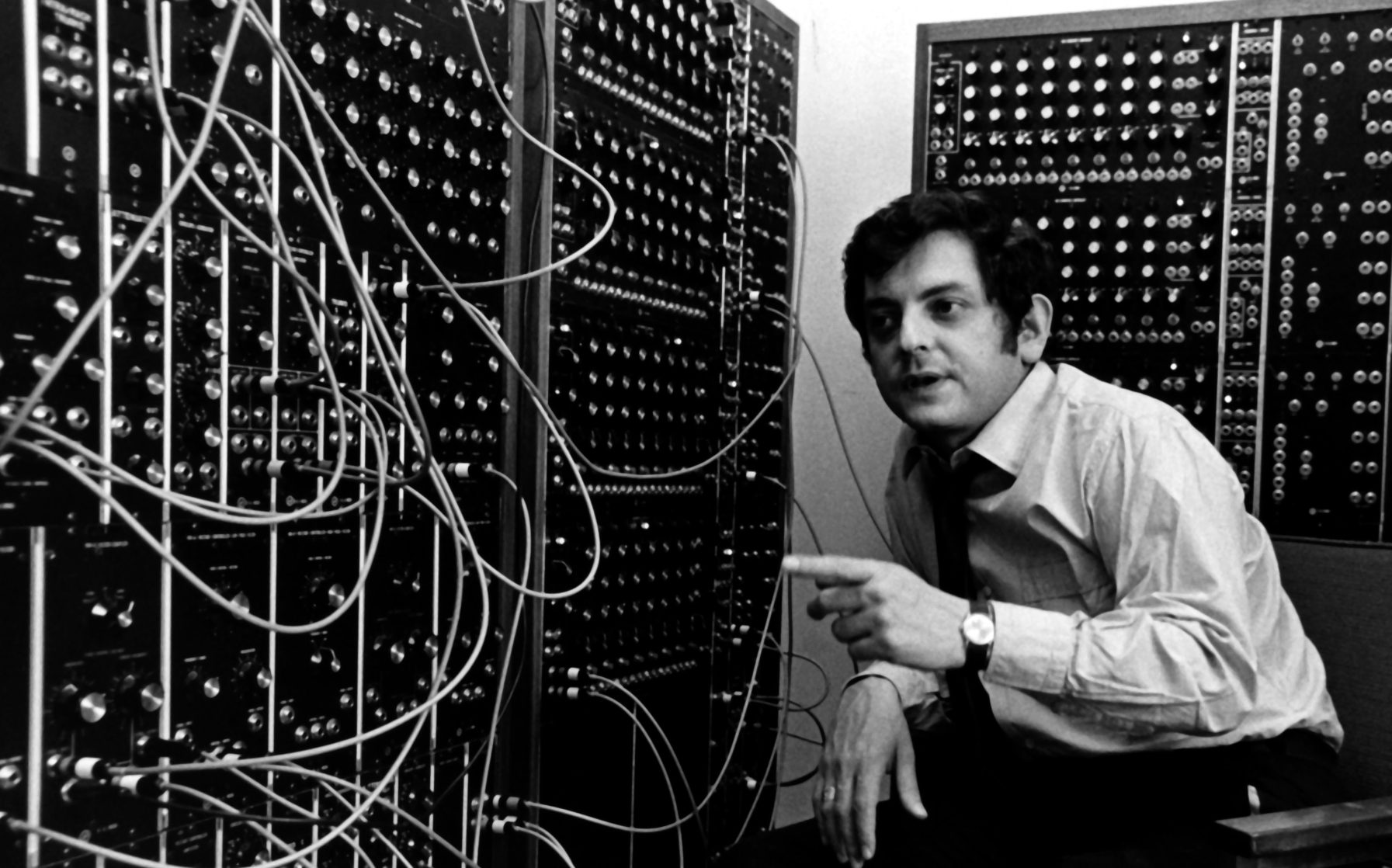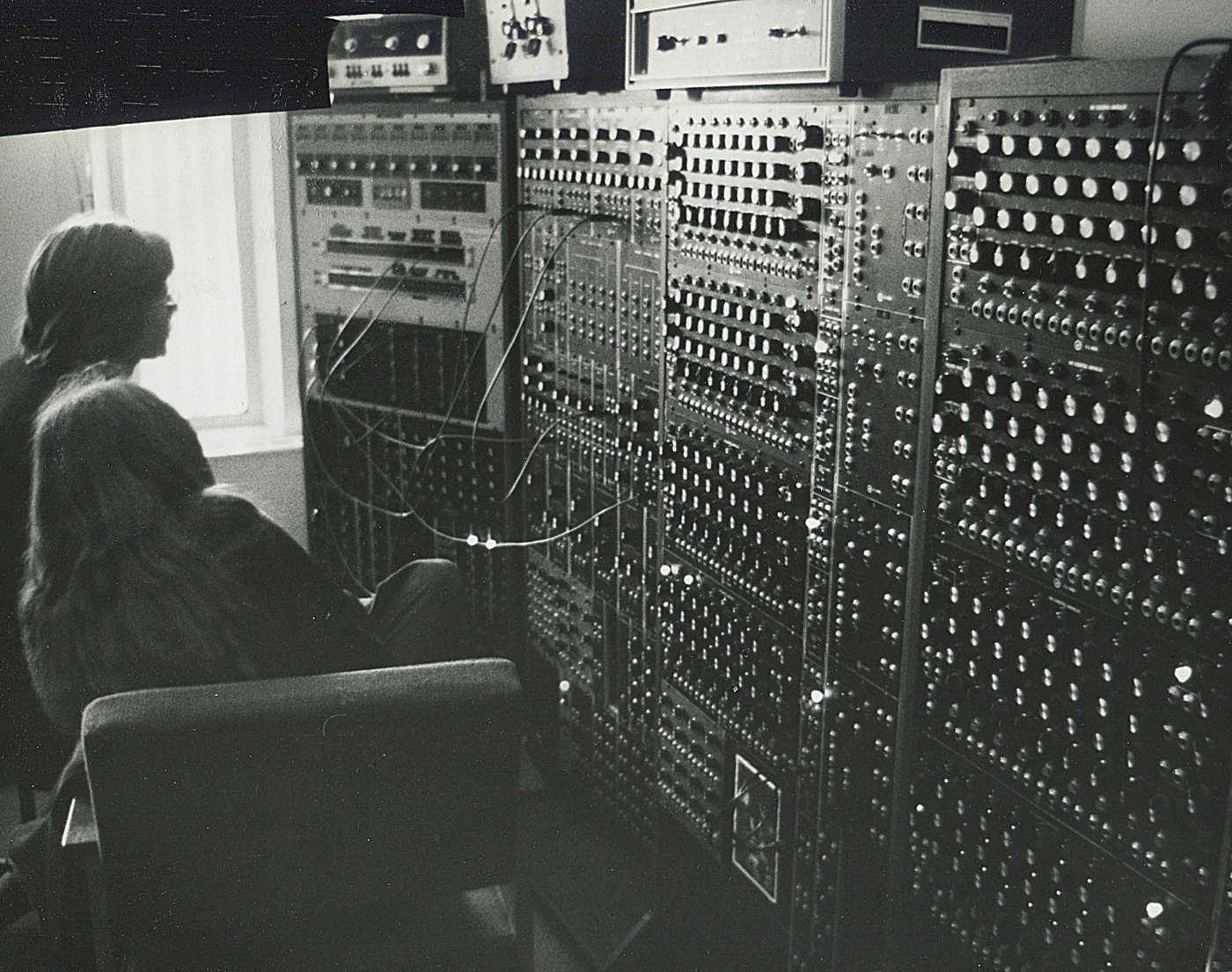IdeasOfMovement

Ideas of Movement at Bolton Landing
In 1971, as I was creating the sounds in Ideas of Movement at Bolton Landing, Wallace Stevens’ poem titled The Idea of Order at Key West came to mind. And David Smith’s abstract sculptures, several of which were displayed on his land at Bolton Landing, on the shore of Lake George, north of Albany, also came to mind. The logic of the words and their sequence in Stevens’ poem, and the forms and links of the steel shapes in Smith’s sculptures, suggested to me the special sequence and character of sounds that I was composing. But unlike a poem or a sculpture, the sounds in Ideas of Movement at Bolton Landing could go on forever, without repetition, always changing, as an ongoing unpredictable sequence of poetic and steel sounds.
This composition is, to my way of thinking, one of my most important works. As in Drift, the dynamically and automatically changing texture of the sound was, for me, fascinating as something I had not heard before. Far more subtle and lyrical than Drift, Ideas of Movement at Bolton Landing was also, in its way, more related to the real world.
The most important aspect of this composition, however, was in the interactive relationship between performer and music. I was performing this sound, in other words, as if I was a conductor conducting an improvising orchestra, in this case, however, with two joysticks, each one moving back & forth and left & right, giving me four ways—speed (things change more slowly or faster), density (more or fewer ‘instruments’ playing), general pitch (focus on higher or lower), and spatialization (how the sounds are distributed through space)—of conducting the music, making my changes as I listened to what was happening. It was like a conversation. Ideas of Movement at Bolton Landing was the first example of what I came to call interactive composing.
It was also portable. I had purchased travel cases from Moog to take some of the modules from the studio, carry them to another venue to perform a concert, and then bring them home again to continue working.
•
In fact, things got busy. University students used the studio. And younger students from local schools came in buses to see the studio. Wendy Carlos’ Switched on Bach was the hit of the day for Robert Moog’s synthesizers.

We had professional visitors. John Cage, for example, used the studio to compose Birdcage. John Roy, an artist with particular interest in technology, created specific devices, among them a device that we called Daisy, for us to use in the studio and on the road. And Salvatore Martirano, at the University of Illinois, built the SalMar Construction, which, in parallel with my thoughts, was based on concepts of interactive composition. The idea was in the air.
•
For other compositions, click on a title
Blues Mix 1966
Albany Music 3 1966
Jack in January 1967
Street Scene 1967
Drift 1970
Ideas of Movement at Bolton Landing 1971
Echoes 1972
From The 14th On 1973
Flowers 1975
Settings for Spirituals 1977
Solo 1978
Scenes from Stevens 1979
Follow Me Softly 1984
After Some Songs 1995
Spring Drum with Pierre’s Words 1997
Many Times … 2001
One World 1 2006
Micro Fictions 2009
Different Cities 2013
